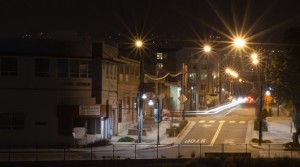 Cities throughout the world are making the major transition to LED lighting for their outdoor fixtures. Nationally and within [city], the perks of LED lighting for parking lots, roadways, government buildings and more start with energy efficiency, continue through cost saving and keep going with environmental consciousness.
Cities throughout the world are making the major transition to LED lighting for their outdoor fixtures. Nationally and within [city], the perks of LED lighting for parking lots, roadways, government buildings and more start with energy efficiency, continue through cost saving and keep going with environmental consciousness.
Some cities in California are early adopters, and they have opted to replace older, outdated fixtures that run off of expensive and energy un-conscious technology with newer alternatives that are much less expensive to run. Local governments throughout California are relying on updated options like LEDs to bring their cities into the 21st century.
Berkeley, California began a transition to LED lighting fixtures for their outdoor needs in 2012. The huge undertaking is due to replace thousands of light fixtures throughout the city.
So how does Berkeley’s decision apply to a government located all the way in [city]? Berkeley’s example has global implications for energy conscious changes that are valuable regardless of geographic location.
Though the change seems as if it should only affect the nighttime visibility in city public areas, in actuality, it will change the way many things are done throughout Berkeley. For instance, the amount of manpower necessary to keep the areas lit will decrease substantially. The current fixtures require bulb replacement every few years. Though the older options can be lower cost, they cost the city hours to replace the bulbs at the regular intervals. The cost of the bulbs over 20 years very definitely adds up.
The consistent expenditure for bulbs is a big deal once the longevity of LED alternatives is considered. Currently, bulbs are being replaced approximately every three years. Over 20 years, more than 6 bulbs will be used on the lights throughout the city. LED options, on the other hand, are rated for more then 50,000 hours of use, but many actually run up to 100,000 hours. This capability for longevity equates to at least 15 and as much as 20 years of use. Long standing city employees who work on the installation of the bulbs may very well be retired by the time the fixture’s lifecycle ends.
Additionally, LED bulbs use about a quarter of the wattage of more traditional exterior lighting options. That means that they are able to run on 75 percent less power than the existing fixtures, and those cost savings go back into government coffers. The city is slated to save about $400,000 per year on energy costs alone.
Beyond just financial and structural advancements, cities all over the world are turning to LEDs for the brightness and true color that they are able to provide. This valuable adjustment could be huge in places like [city]. LEDs are able to illuminate city streets in a way that has been shown to add to existing safety measures. Buenos Aires, Argentina also undertook a similar plan to use LEDs to help cut down on crime throughout the often dangerous city. That is the hope in Berkeley as well. By providing brighter and more clearer lights in the evening, facial recognition cameras are more able to capture reliable pictures that can be used to stamp out crime.
The local Berkeley government is embracing emerging technology as a way to save money, devote resources to other beneficial necessities and reduce the likelihood of crime throughout the city. Outdoor LED alternatives are the future of lighting, and local governments, corporations, small businesses and more can benefit from the availability of the technology. From Berkeley to [city] and beyond, LED savings represent a major shift in financial output. If you think that LEDs are the next step for your enterprise, please don’t hesitate to contact us.

![Is LED the Most Efficient Lighting Option in [city]? [city]](https://8blocks.s3.amazonaws.com/eepros/blog-images/2015/07/led-823383_640-300x196.jpg)
![5 Key Things To Remember About Retail Lighting [city]](https://eepros.com/wp-content/uploads/2020/02/shopping-mall-522619_640-300x205.jpg)
![Bachelor Pad Design 101: Lighting the Bedroom [city]](https://eepros.com/wp-content/uploads/2018/06/architecture-bed-bedroom-271743-300x168.jpg)
![CFLs vs LEDs: What is the most efficient lighting in [city]? [city]](https://8blocks.s3.amazonaws.com/eepros/blog-images/2015/03/cflvsled-300x200.jpg)